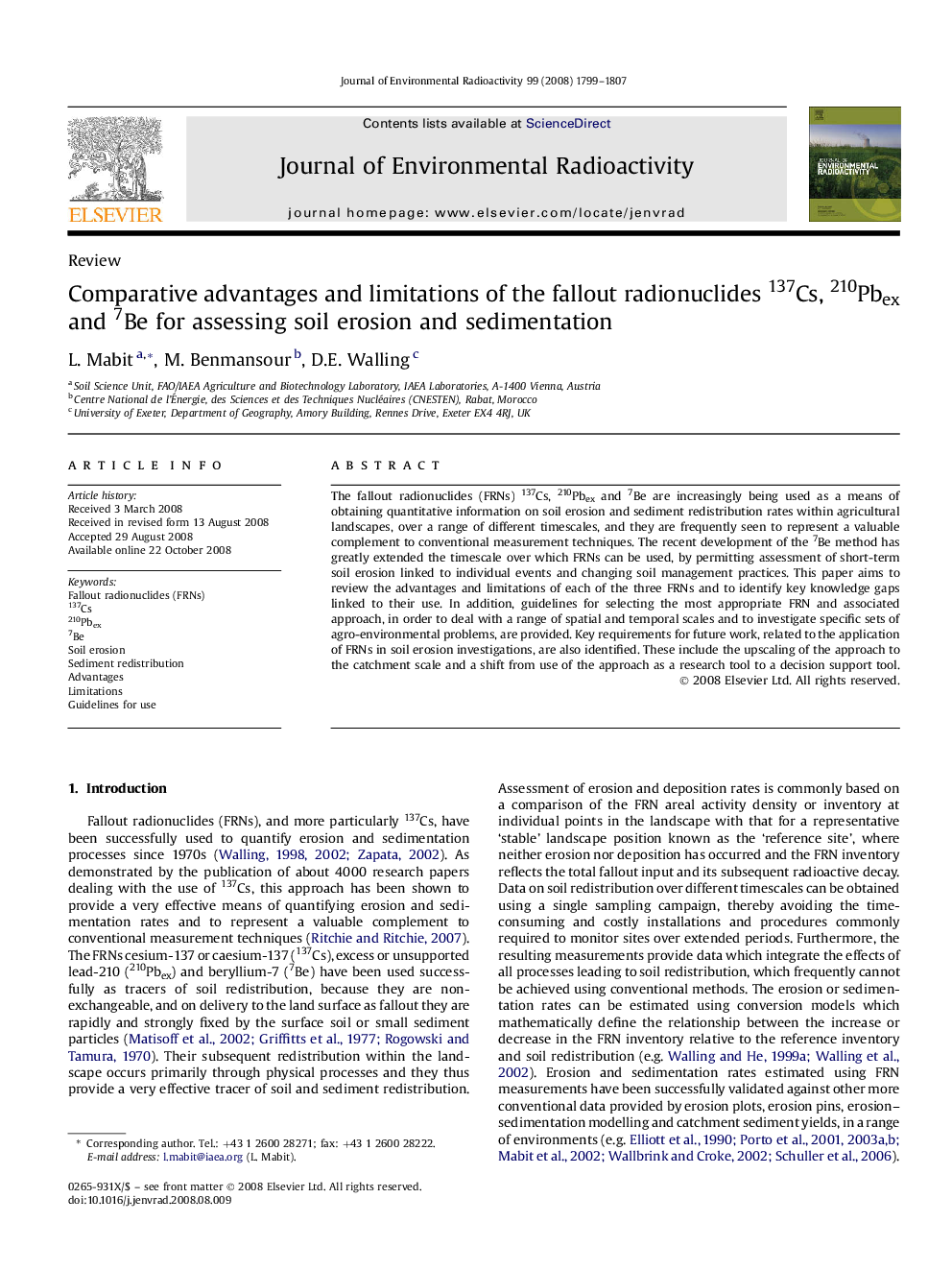| Article ID | Journal | Published Year | Pages | File Type |
|---|---|---|---|---|
| 1739007 | Journal of Environmental Radioactivity | 2008 | 9 Pages |
The fallout radionuclides (FRNs) 137Cs, 210Pbex and 7Be are increasingly being used as a means of obtaining quantitative information on soil erosion and sediment redistribution rates within agricultural landscapes, over a range of different timescales, and they are frequently seen to represent a valuable complement to conventional measurement techniques. The recent development of the 7Be method has greatly extended the timescale over which FRNs can be used, by permitting assessment of short-term soil erosion linked to individual events and changing soil management practices. This paper aims to review the advantages and limitations of each of the three FRNs and to identify key knowledge gaps linked to their use. In addition, guidelines for selecting the most appropriate FRN and associated approach, in order to deal with a range of spatial and temporal scales and to investigate specific sets of agro-environmental problems, are provided. Key requirements for future work, related to the application of FRNs in soil erosion investigations, are also identified. These include the upscaling of the approach to the catchment scale and a shift from use of the approach as a research tool to a decision support tool.
